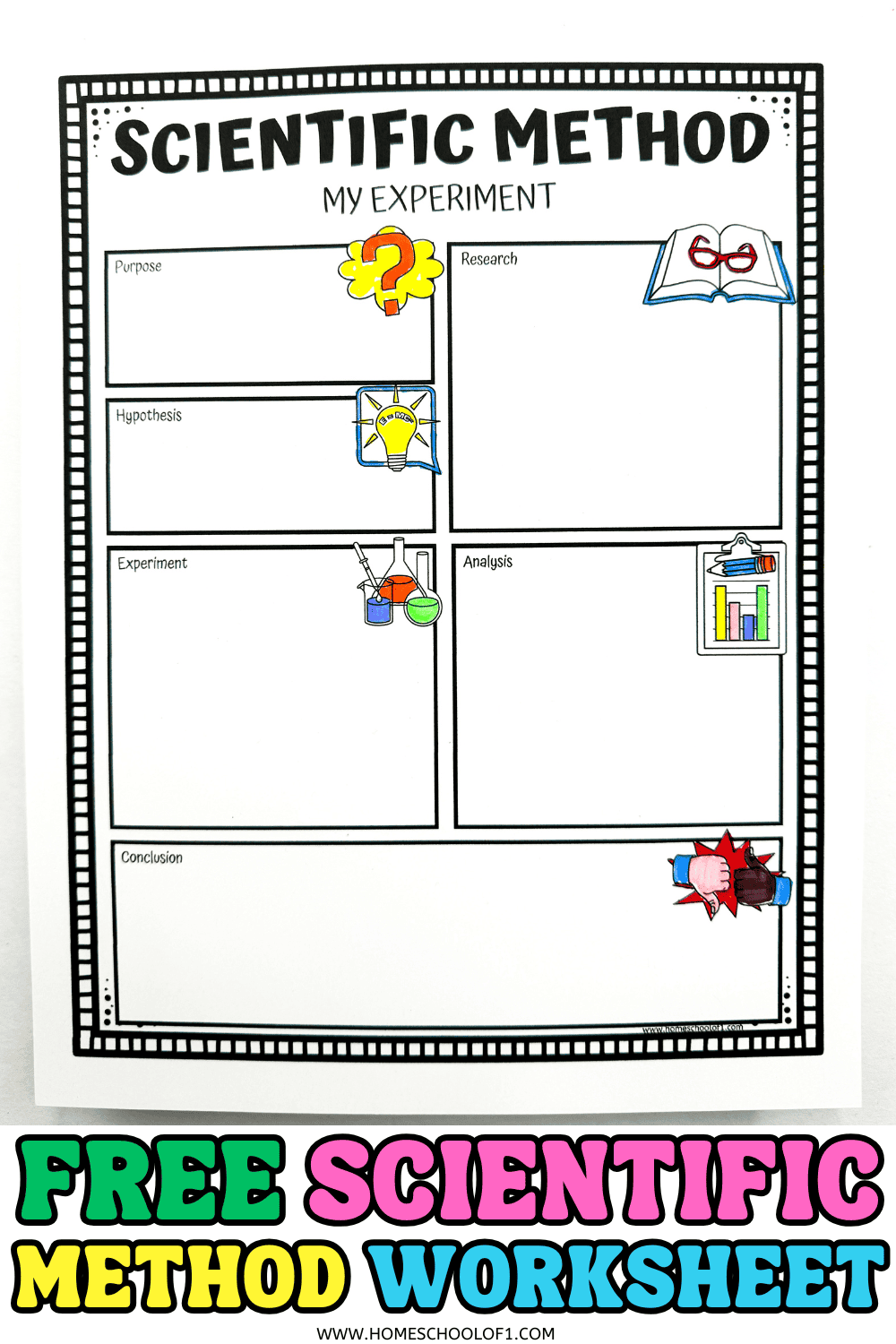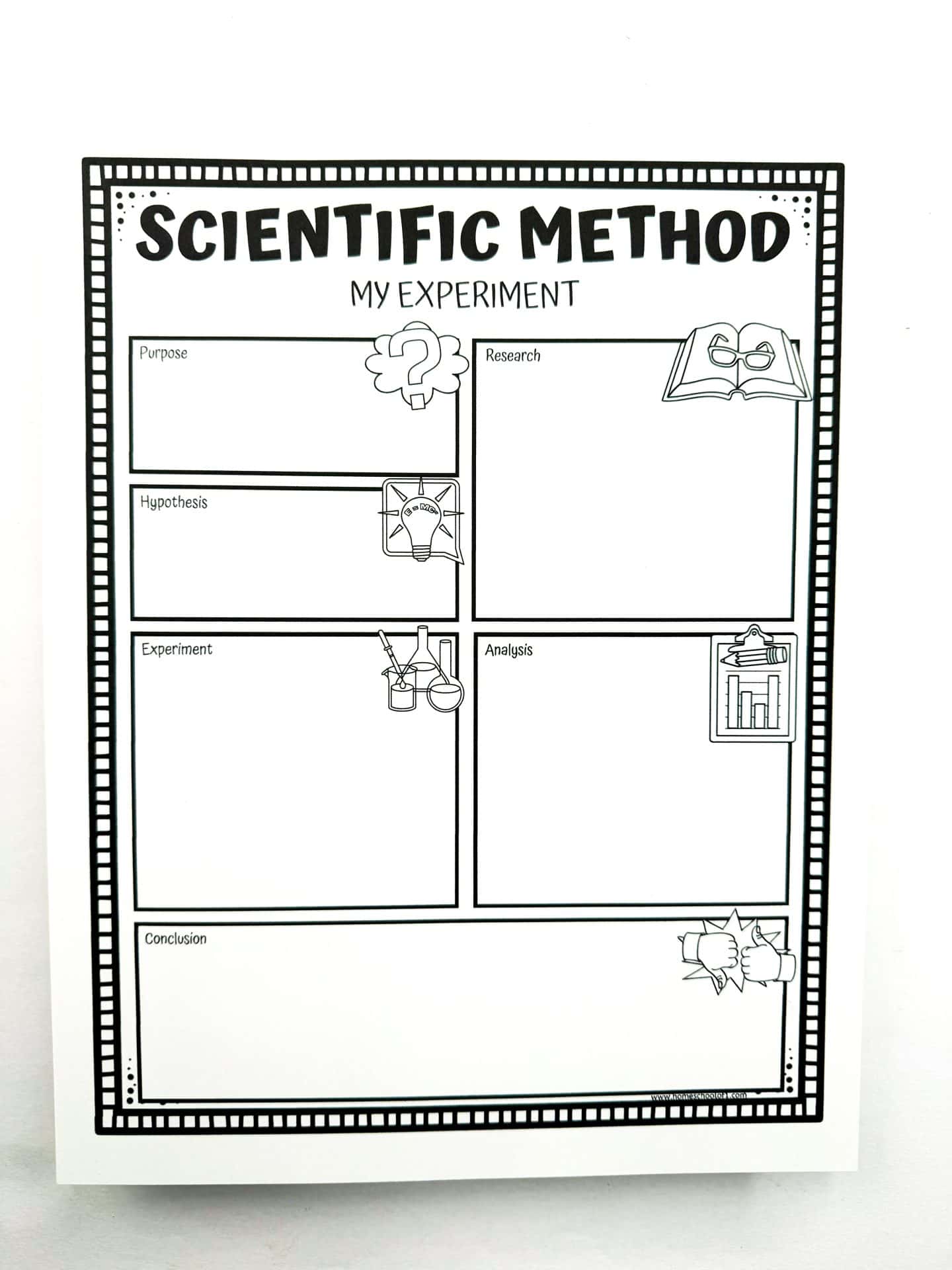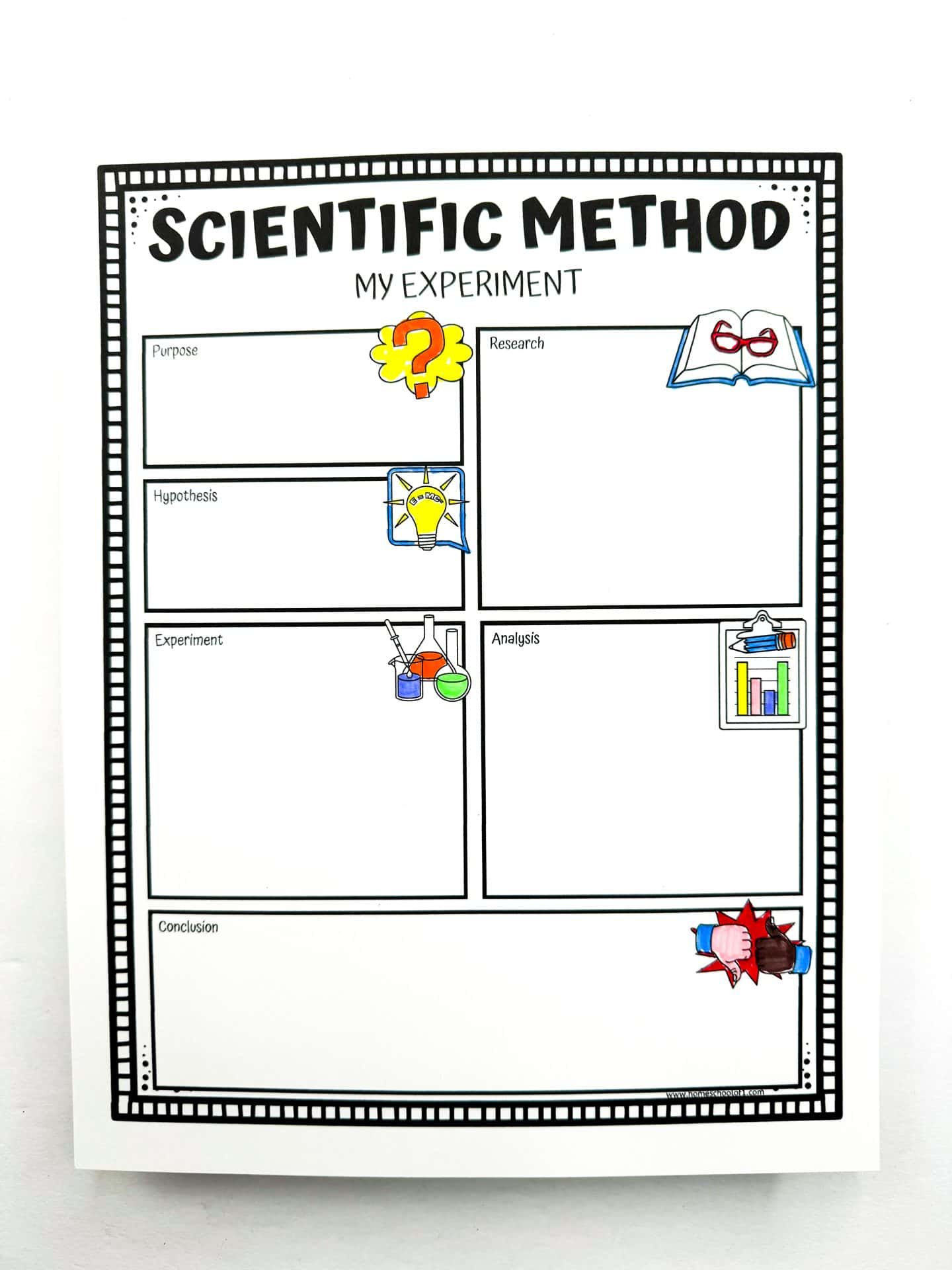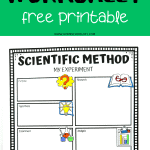Free Scientific Method Worksheet for Young Scientists
This free scientific method worksheet is a simple way to introduce kids to science without overwhelming them.
I designed it to make the process feel approachable—especially for younger learners who are just starting to ask big questions and explore how things work.
The layout walks kids through each step, with space to write and illustrations to color, making it both visual and interactive.
Whether you’re teaching in a classroom or working on a science project at home, this free science printable offers a clear starting point.

**This post may contain affiliate links. As an Amazon Associate and a participant in other affiliate programs, I earn a commission on qualifying purchases.**
What Is The Scientific Method?
This free one-page PDF scientific method worksheet is designed to simplify science experiments for kids, making each step easy to understand and apply.
The scientific method is a step-by-step process that helps us ask questions, test ideas, and make sense of what we discover.
It’s a tool scientists use all the time—but it’s also perfect for helping kids learn how to explore the world around them in a thoughtful way. Here’s how each part works:
Purpose
This is where it all starts—what question do you want to answer? The purpose is simply the goal of your experiment. It could be something like “Which paper towel is the most absorbent?” or “What makes bread rise?”
Hypothesis
Once you’ve got a question, it’s time to make a guess. A hypothesis is a prediction based on what you already know. It doesn’t have to be right—it just has to be something you can test.
Research
Before jumping into the experiment, it helps to do a little background digging. Maybe read a book, watch a video, or ask someone who knows about the topic. This can help you shape your hypothesis and set up your test.
Experiment
Now for the fun part—testing your idea! A good experiment changes just one thing and observes what happens. Try to keep everything else the same so your results are clear and fair.
Analysis
After the experiment, look at what happened. Did things turn out how you expected? Were there any surprises? Kids can write down their results or even make a simple chart or drawing to help understand what the data says.
Conclusion
Finally, think about what you learned. Did your results support your hypothesis, or did they lead to a different answer? Either way, it’s part of learning how science works!
Each of these steps helps build a strong foundation for thinking like a scientist—asking questions, testing ideas, and learning from what happens.

How to Use the Scientific Method Worksheet
Scientific method worksheets are designed to guide kids through their own science experiments in a simple, visual way.
Ideal for ages 7–12, it includes black-and-white icons for each step that kids can color, helping reinforce the process while keeping it fun and interactive.
To get started, choose a basic experiment—something easy to try with everyday materials.
As they work through the activity, kids can use the worksheet to record each step, from their question and hypothesis to the results and conclusion.
The worksheet pairs especially well with hands-on learning. Encourage kids to color in the icons as they go, jot down observations, and reflect on what they discovered at the end.
It’s a great way to build science thinking skills in a structured but approachable format.

Best Science Experiment Books for Kids
If you’re looking for more ways to bring science to life, these science experiment books are great companions to the scientific method worksheet.
Packed with easy-to-follow activities and kid-friendly explanations, they offer plenty of inspiration for experiments you can try at home or in the classroom.
- Awesome Science Experiments for Kids – A go-to favorite with over 100 fun STEM projects using simple materials. Great for ages 5–10.
- Super Simple Science Experiments for Curious Kids – Focuses on using items you already have at home—perfect for low-prep, high-interest learning.
- Kitchen Science Lab for Kids – Combines science with everyday ingredients. Ideal for curious kids who like to mix, pour, and observe.
Each of these books encourages hands-on exploration and can help kids apply the steps of the scientific method in a real, meaningful way.
Pairing them with the worksheet makes science more structured, yet still fun and approachable.
More Science Printables for Hands-On Learning
If your kids enjoyed using the scientific method worksheet, you might also like these free science-themed printables available on Homeschool of 1:
- Human Body Worksheets – Perfect for exploring anatomy and body systems with labeled diagrams and activities.
- Life Cycle Worksheets – Cover butterflies, bees, frogs, and more—great for observing change over time.
- Weather Worksheets – A fun way to track daily weather and introduce concepts like the water cycle and weather patterns.
- Solar System Worksheets – Focus on the solar system, and astronauts, ideal for sparking curiosity about space science.
- Rock Cycle Worksheets – Help explain how rocks form and change, a great tie-in for earth science units.
These printables all support early science skills and give kids more opportunities to explore, observe, and learn through discovery.
Need to print later? Add this to your Pinterest board or share it on Facebook. You’ll have it handy whenever you’re ready to use it!
Get Your Free Scientific Method Printable Here!
Ready to grab your free printable? Just pop your name and email into the form below, and it’s all yours!
Last Updated on 11 April 2025 by Clare Brown



